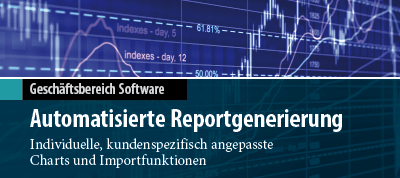New in Amsterdam Modeling Suite AMS 2020
The molecular DFT code ADF is now fully integrated with the AMS driver. This enables you to more easily and efficiently explore potential energy surfaces, for example to find transition states (see video). Now it is also easier to screen molecules for desired properties and to set up workflows across different methods.
Researchers can perform a larger variety of multi-layer calculations for molecules as well as for periodic systems with the new hybrid engine. Any quantum mechanics and force field-based methods can be combined in any number of layers with mechanical embedding through a subtractive scheme. Electrostatic embedding through additive QM/MM is available for 2-layer systems with ADF, BAND or DFTB as the quantum mechanical region.
Explore conformers, reaction energies, and potential energy surfaces with fast and accurate high-dimensional neural network potentials (HDNNPs) ANI-1ccx and ANI-2x or use your own machine learning potentials.
The central AMS driver has several new analysis tools, improvements in the MD driver and geometry optimizer, enabling them for all atomistic engines in the Amsterdam Modeling Suite. COSMO-RS can now deal with conformers, multiple protonation states and explicit solvent coordination.
AMS driver
- External electric fields: homogenous and multipole charges for 0D, 1D, and 2D periodic systems
- Better thermodynamics with the free rotor interpolation for low frequencies
- Mobile block Hessian normal modes: parts of the molecule as rigid blocks
- More vibrational spectra: (resonance) Raman, (resonance) vibrational Raman optical activity, vibrational circular dichroism
- Regions to simplify input for options for a subset of atoms
- Include additional potential terms (i.e. springs) through restraints
- Molecular Dynamics improvements
- Accelerating bonding reactions (bond boost)
- Time-dependent lattice deformations
- Selectively disable writing some parts of an MD trajectory
- Trajectory analysis improvements
- Reaction networks (ChemTraYzer)
- Tracking molecular adsorption
- Autocorrelation functions including FTIR and diffusion coefficients
- Geometry optimizer improvements
- Optimize periodic models using delocalized coordinate systems (Quasi-Newton)
- Constraints for the lattice degrees of freedom
- Distance-based constraints (sum or difference), also available for PES scans
- Specify an approximate reaction coordinate (TSRC)
ADF
- Integrated with AMS driver
- New and easier input (conversion scripts)
- Doubly parallelized numerical frequencies
- Faster geometry optimization with an initial Hessian from a faster engine
- Quickly validate nature of minimum or transition state with PES point characterization
- Symmetrization in ADF no longer default AMS driver symmetry (including non-Abelian point groups)
- Fast G0W0 and RPA single point calculations
- Accelerated canonical MP2, enabling fast calculations on 100+atom molecules also for DSD and standard double hybrids (DOD still the fastest)
ADF & BAND
- Scalar relativistic ZORA treatment by default
- QM/MM and QM/QM’ calculations with any periodicity (Hybrid Engine)
- STO basis sets for hypothetical elements Uue (Z=119) and Ubn (Z=120)
DFTB
- GFN1-xTB is the new default model
- Much faster GFN1-xTB calculations with many k-points
- Use as higher or lower level engine in multi-layer calculations
Machine learning potentials
- Interface between the AMS driver and several ML potential backends
- Pre-parametrized high-dimensional neural network potentials:
ANI-2x (H,C,N,O,F,S,Cl)
ANI-1ccx (H,C,N,O)
Multi-layer calculations
- Hybrid Engine: easily set up QM/MM, QM/QM’, MM/MM’, and multi-layer
- QM engines: ADF, BAND, DFTB, MOPAC
- MM engines: ReaxFF, ML Potentials
- new Force Field engine (UFF, GAFF, Amber, Tripos)
- Electrostatic embedding for two-layer QM/MM, with DFT or DFTB
COSMO-RS
- Default via AMS driver: easy module switching
- Can now treat 1D and 2D periodic systems
- Tapered bond orders
- Charge constraints
COSMO-RS
- More accurate fluid thermodynamics with multiple species, e.g.
- Different protonation and dissociation states
- Aggregation to dimers and oligomers
- Explicit solvation
- Conformers






















